Best hedges for pollinators – 10 shrubs that are beneficial for bees, birds and butterflies
Many of the best hedges for pollinators produce brilliant blooms that will hum with activity in spring and summer
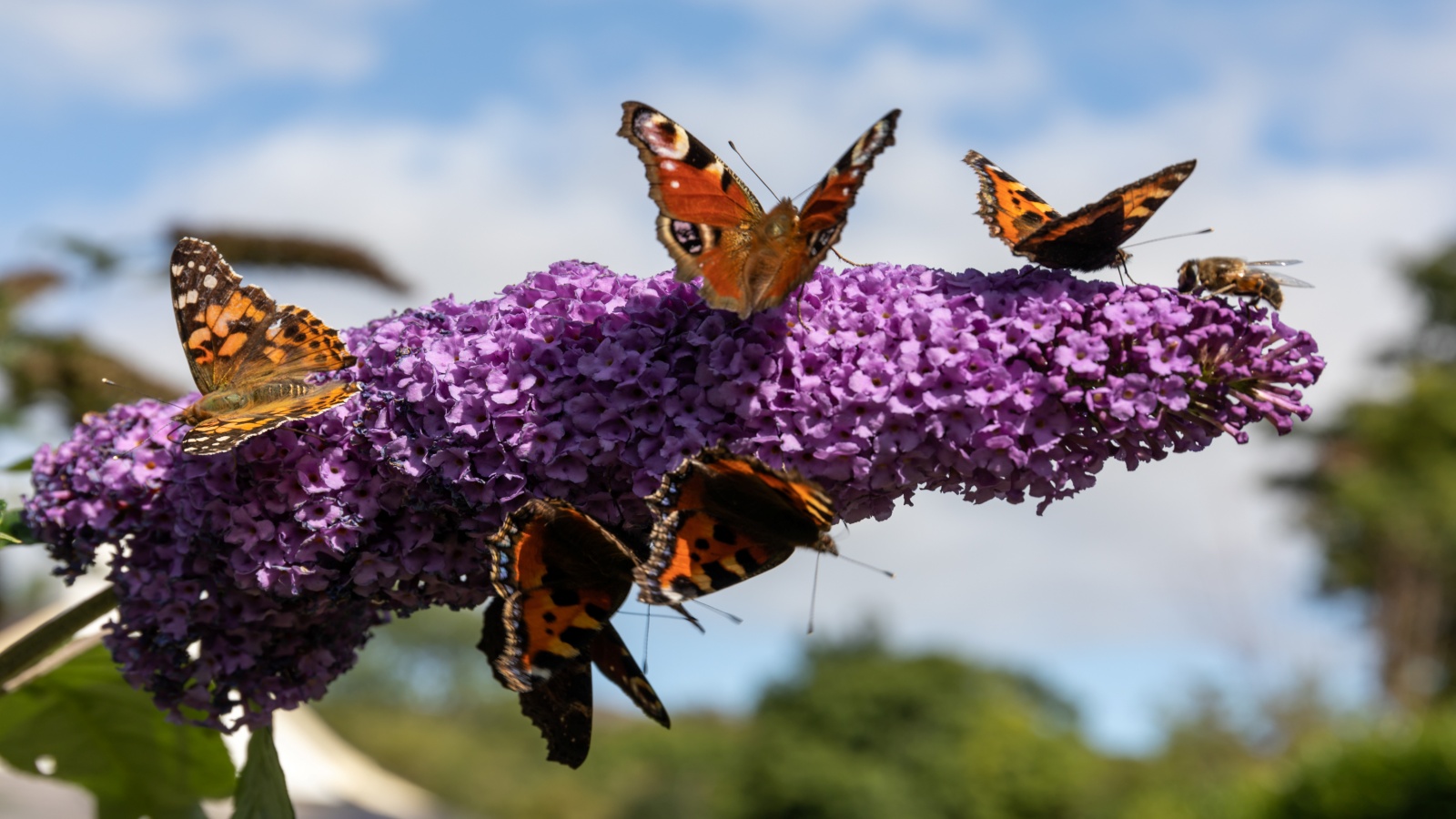
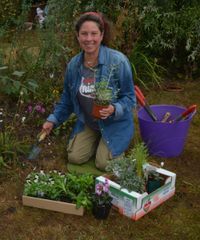
Pollinators, including bees, butterflies, and other insects and creatures, are vitally important to our plots. Sadly, you will often read about them in the news for all the wrong reasons.
Their numbers are plummeting as climate change and habitat loss destroys their habitat, and this will have a disastrous knock-on effect on us all.
One way in which we can help is by adding plants for pollinators, and fortunately, many hedging options are known to be a hit with these tiny beasties. So, if you are seeing wildlife garden ideas this year, consider planting a hedge that will be a hit with passing insects and birds.
What are pollinators?

Hummingbirds are important pollinators
Pollinators are small creatures, usually insects or birds, that transfer pollen from plant to plant to help them reproduce. They visit the plant to feed on its nectar and in doing so, accidentally collect pollen which they take to the next plant they feed on.
Bees are the best pollinators, followed by butterflies and moths, wasps, hoverflies, flies and even beetles that collect and transfer pollen that has fallen to the ground. Larger pollinators include hummingbirds and bats.
Hummingbirds are very important North American pollinators and bats help pollinate more than 500 plant species across the globe. They feed on insects close to the plants and also feed on nectar. Bats also help pollinate agave plants - so without them, we wouldn’t have any tequila to drink!
10 best hedge plants for pollinators
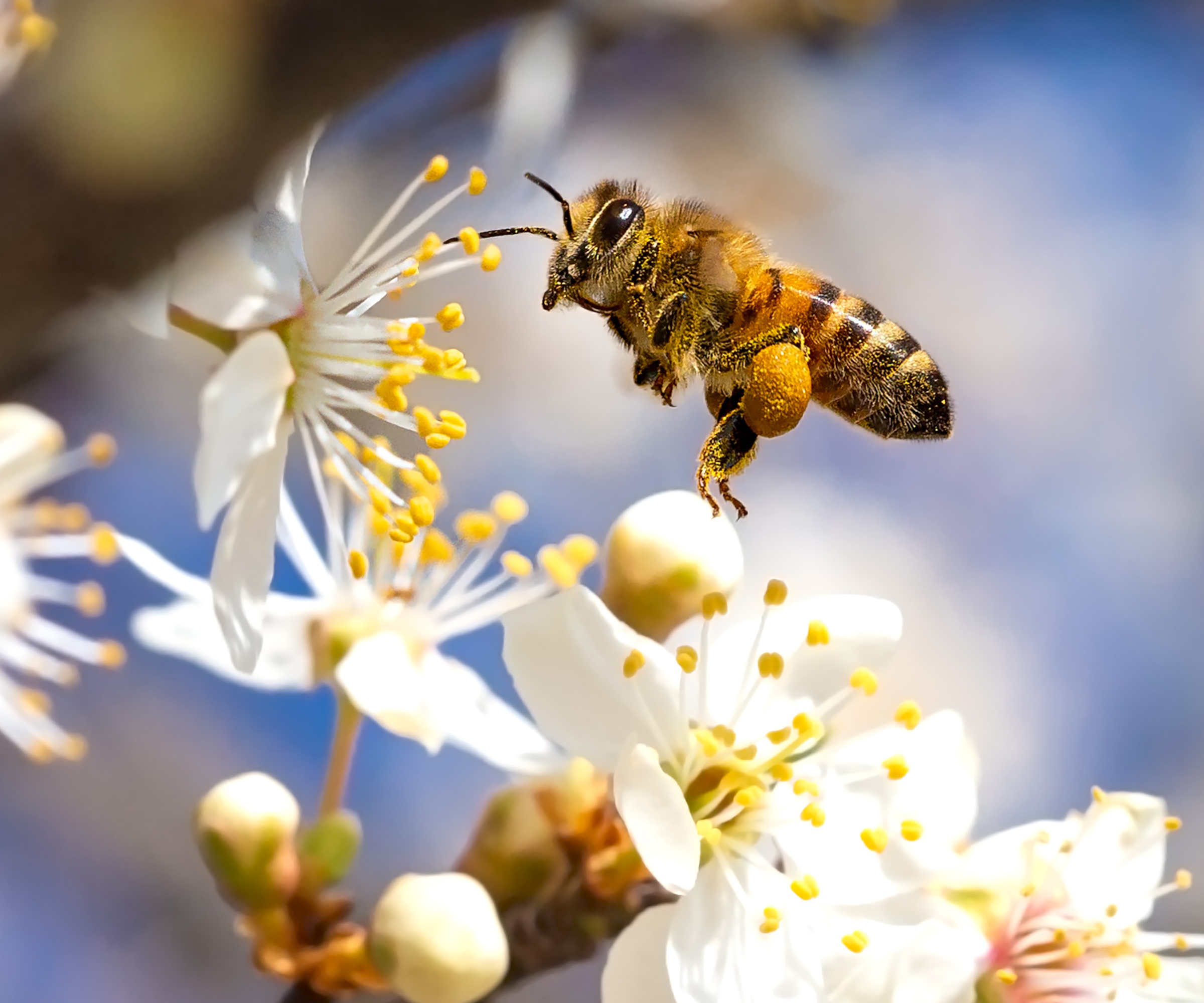
A pollen-laden honeybee searching for nectar
When planning a hedge for pollinators, which will also be of benefit to wider species of wildlife too, consider the soil type in your yard and whether it is acid or alkaline. This is easy to discover using a soil test, available from Amazon.
Design expertise in your inbox – from inspiring decorating ideas and beautiful celebrity homes to practical gardening advice and shopping round-ups.
Aim to create as long a flowering period as possible and include evergreen trees and shrubs in the mix to offer year-round shelter and protection.
Here is our list of 10 of the best trees and shrubs to choose for a hedge for pollinators. You could use only one variety, or create a mixed hedge that offers something through every season of the year.
1. Buddleja
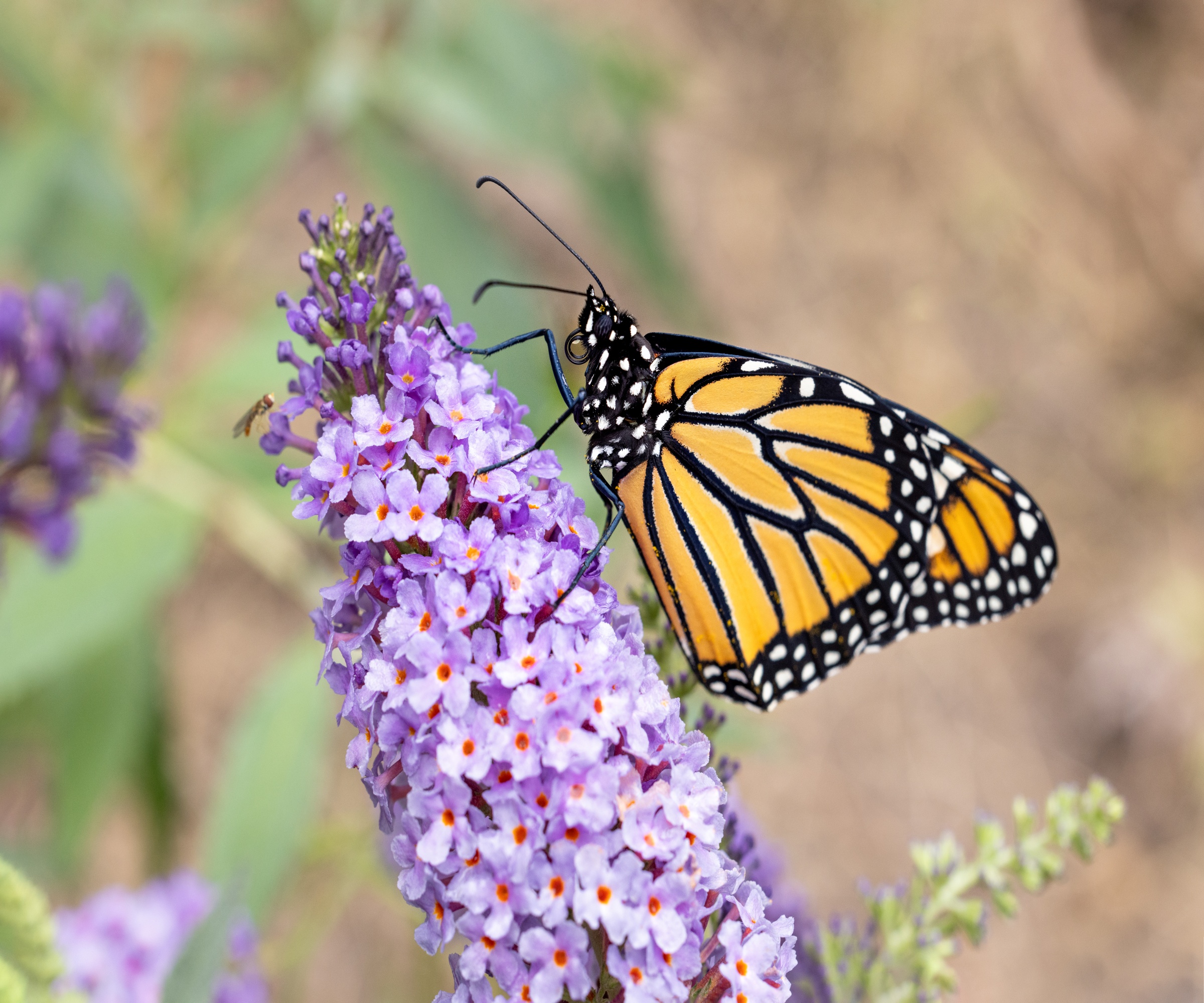
A monarch butterfly feeding on a Buddleja davidii
There is a reason why the common name of Buddleja davidii is ‘butterfly bush’. Their nectar-rich racemes of little flowers act as magnets to all forms of pollinators in the summer, but the butterfly is the most prevalent.
It is also popular with bees, hoverflies and ordinary flies that all feed on its nectar and spread its pollen. This shrub likes a sunny site with well-drained soil and can grow to 8ft tall. Buddleja flowers in shades of mauve and purple, as well as white. The variety Buddeja globosa (also known as the orange ball tree) has round, deep yellow flowers.
Prune in spring by 'stooling’, or cutting branches down to within a few inches of the ground.
Buddleja davidii is hardy to zone 5, dies back in zone 6 and is an evergreen from zone 8 heading south. Buddleja globosa is suitable for zones 5-6 and up.
Buddleja bushes can be bought from Walmart.
2. Hawthorn
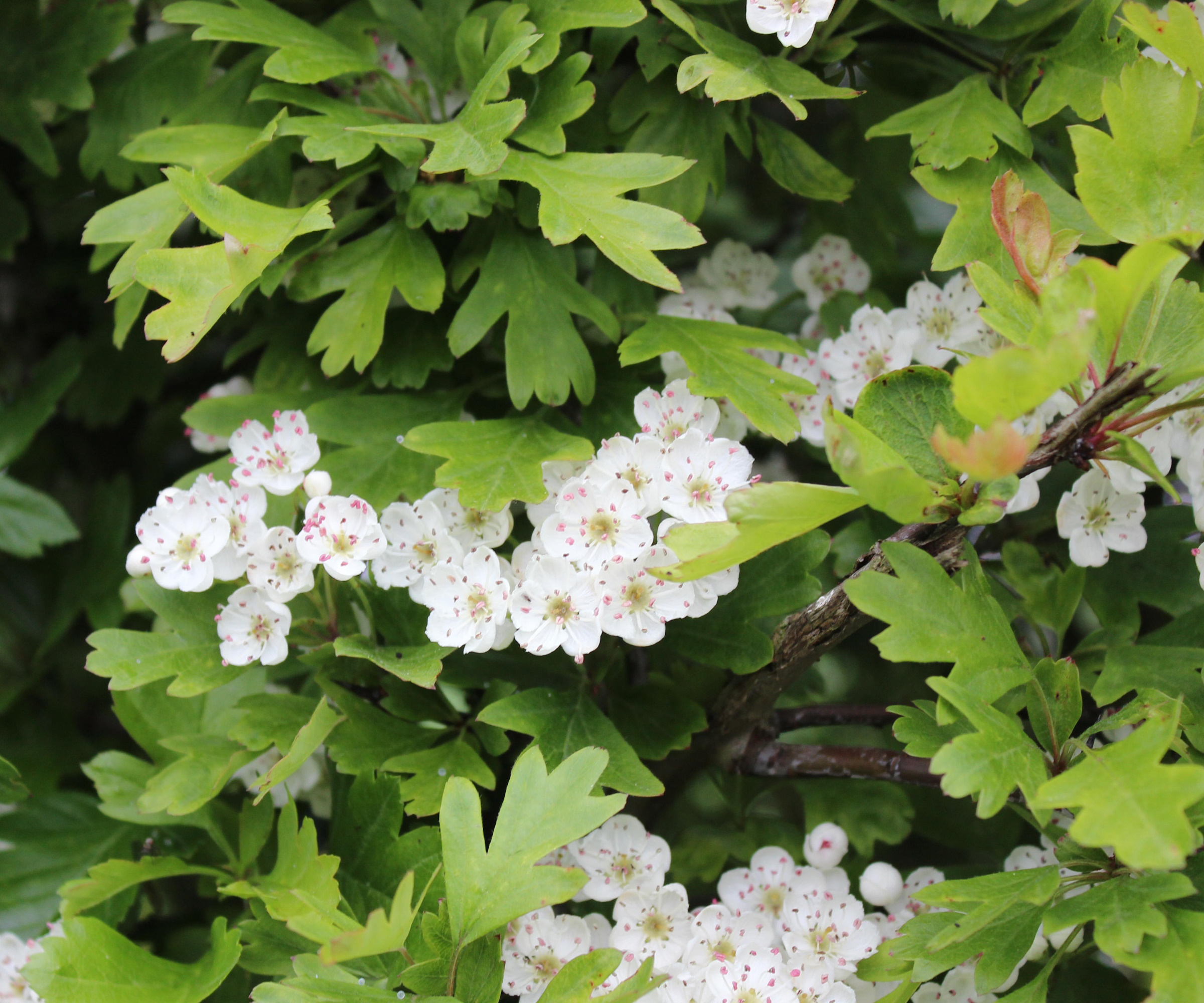
A branch of hawthorn blossom, Crataegus monogyna
Pollinators love the white and pink flowers of hawthorn, Crataegus monogyna, while garden birds will feast on its red berries in the fall. Hawthorn is a hardy, fast-growing shrub that is low-maintenance. As well as providing nectar for pollinators, many varieties have spiny branches that make it ideal as part of a security hedge.
Hawthorn likes full sun and soil with a slightly acidic pH. Hawthorn doesn't need a lot of pruning but can become tangled and untamed if left to their own devices.
They also self-seed very easily so look for unwanted seedlings and either get rid of them or share them with a neighbor. Hawthorn is hardy from zone 3 to zone 9.
Hawthorn plants are available from Walmart.
3. Abelia grandiflora
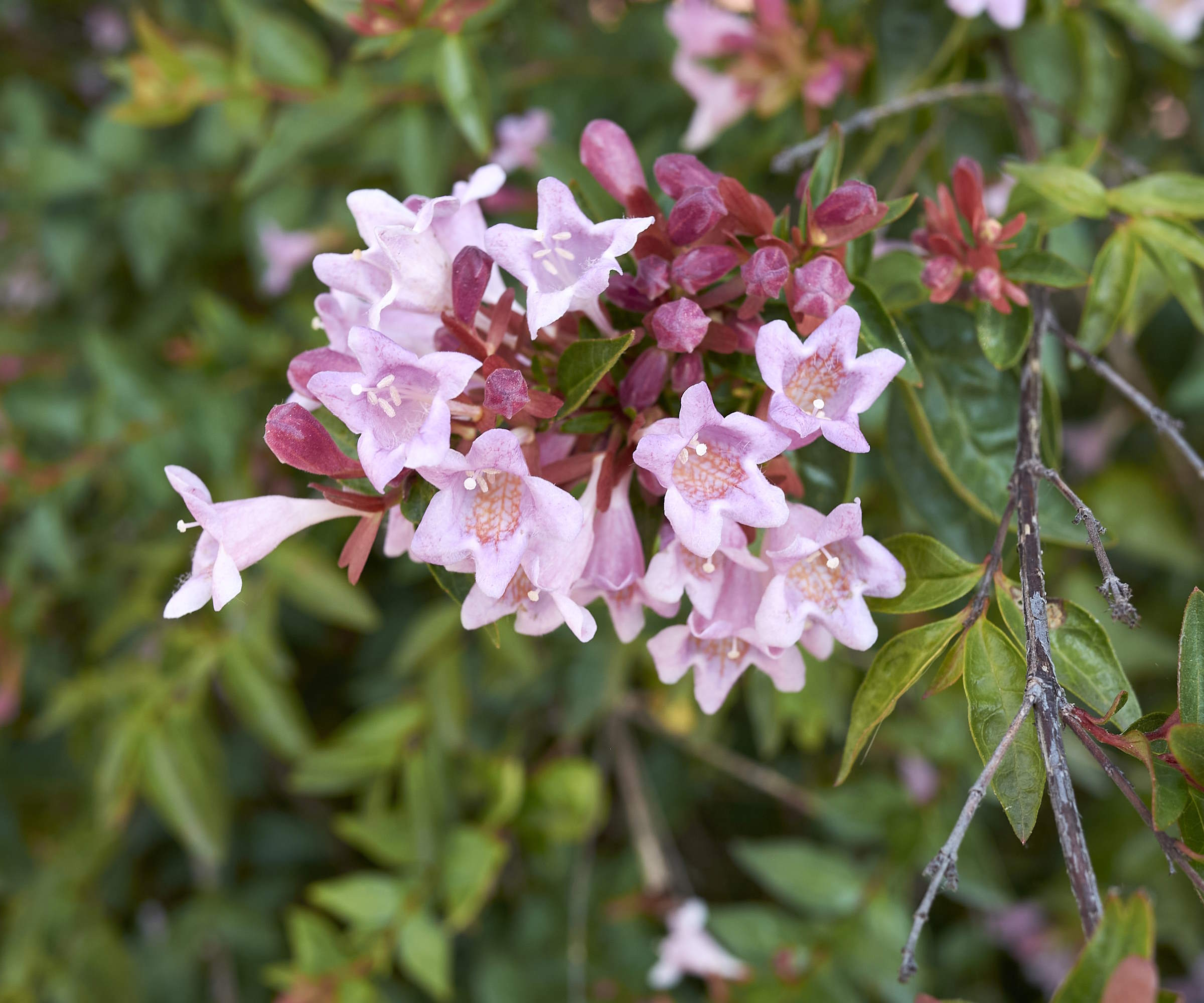
Pink flowers of an Abelia x grandiflora in bloom
Abelia grandiflora is an easy-care shrub that will bring butterflies and hummingbirds to your yard. It can grow up to 10ft tall and provides a wealth of tubular blooms in shades of pink and yellow and also white that appear from spring right through to the fall. The leaves are also attractively colored.
A popular variety is ‘Rose Creek’ which bears flowers that change from pink to white, and green foliage that turns bronze in the fall, all held on trunks with striking deep red bark.
Abelia is one of the more pest and disease-resistant shrubs and needs little watering once it gets established.
Other varieties include ‘Glossy Abelia’ with its fragrant white flowers, ‘Sunshine Daydream’ which has attractive multi-colored foliage, and ‘Edward Goucher’ which has lilac blooms and bronze-tinged leaves.
Suitable for hardiness zones 4-9 as well as zone 10 and zone 11.
4. Privet
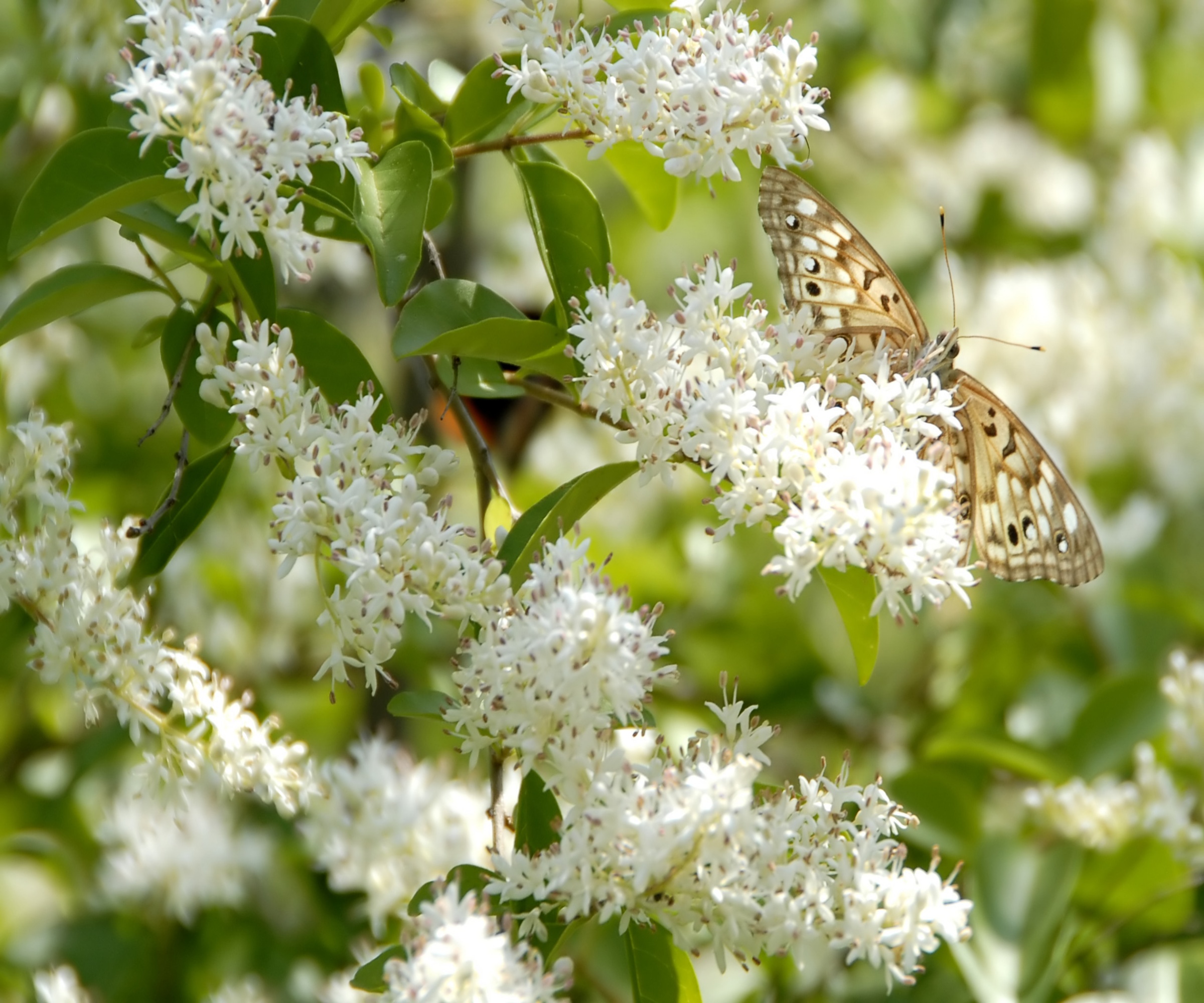
A female hackberry emperor butterfly feasting on privet flowers
Privet, Ligustrum vulgare, is a fast-growing evergreen, making it an excellent species to include as part of your hedge-planting ideas. While it will quickly add privacy to your yard, its small white flowers will also draw in pollinating insects, especially the bees.
It is a hardy shrub and likes full sun or partial light shade. Water well after planting, and give mature trees a good soak occasionally during prolonged dry spells, though the species is remarkably drought tolerant.
Golden Privet is a charming example, with golden leaf margins. Most varieties of privet can tolerate conditions down to hardiness zone 3, making this a remarkably resilient choice.
Privet bushes are available to buy from Walmart.
5. Rambling rose
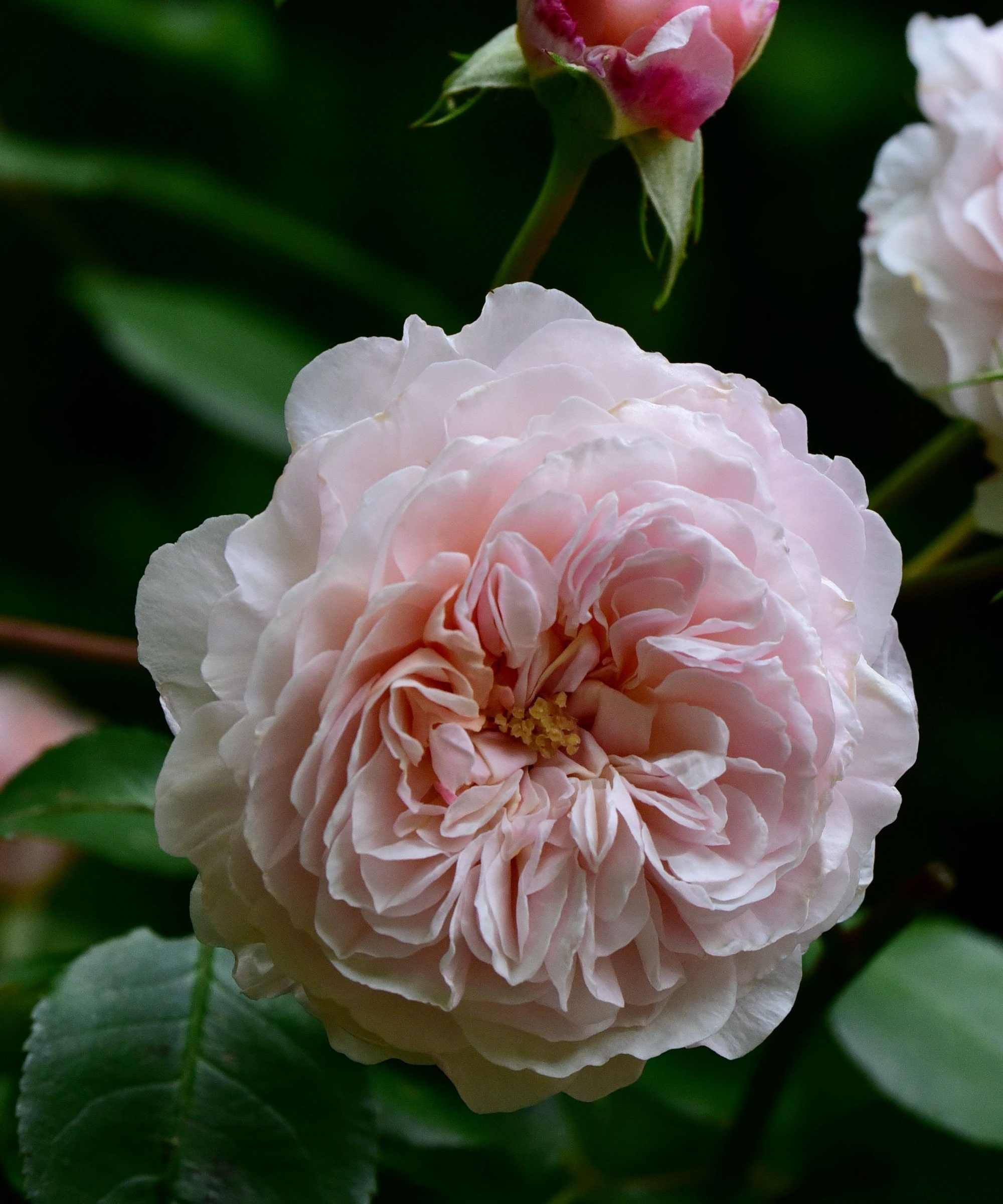
The rambling rose 'The Albrighton Rambler'
All hedges need a pretty rose scrambling through them, and rambling roses are relatively low-maintenance, with only one pruning requirement needed each year after they have finished blooming.
Their flowers will bring the pollinators flocking, and if left untrimmed their faded flowers will turn into red or orange hips to brighten the winter days.
Rambling roses are suitable for zones 5-9 and are happy in most soils but will do best in a light spot where they get up to six hours of sunshine a day. Water when first planted to help them get established, and mulch with well-rotted compost or manure in winter to feed and protect the roots.
Varieties include ‘Phyllis Bide’, which has yellow flowers tinged with delicate pink, the repeat-flowering ‘Super Excelsa’ which has dramatic, semi-double crimson blooms. In addition, ‘The Albrighton Rambler’ is relatively disease-resistant and has soft pink flowers.
You can buy rambling rose plants from Walmart.
6. Buttonbush
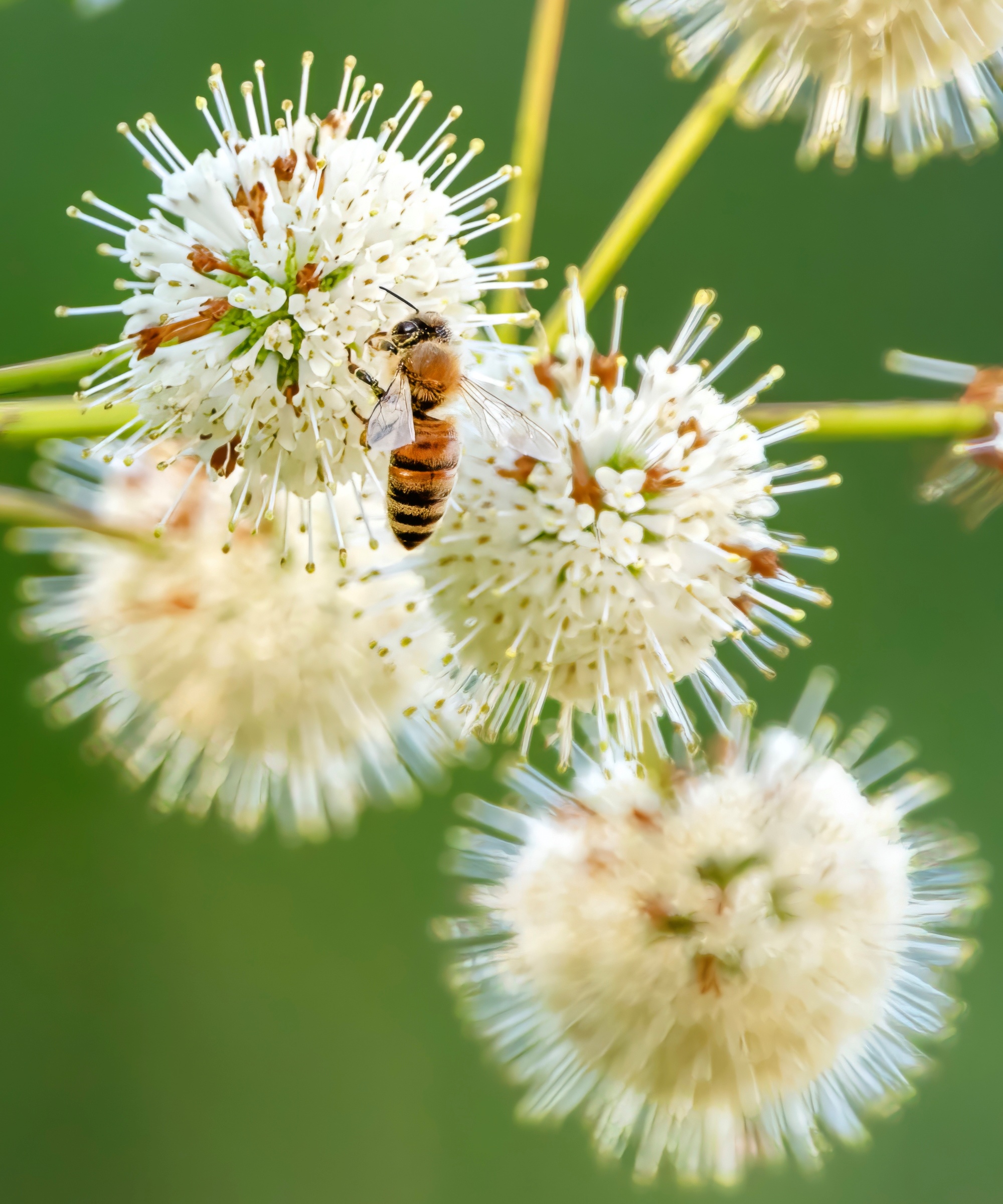
The buttonbush (Cephalanthus occidentalis) is a hit with pollinators and birdlife
The buttonbush, Cephalanthus occidentalis, is a fast-growing shrub that combines beauty with functionality and toughness. It is also a fabulous plant for drawing pollinators to your yard, in particular bees, butterflies, moths and hummingbirds.
Its unusual white, pincushion flowers appear in late summer and the leaves are a food plant for moth and butterfly larvae. It even gives interest in the fall and winter, thanks to its red berries - though they are popular with birds so may vanish before you have time to appreciate them!
Buttonbush grows to 12ft tall and likes full sun, though it can cope with light shade. It dislikes dry conditions so does best in damp soil that is neutral to acidic. It is hardy in zones 5 to 11.
7. Reblooming lilac

The reblooming lilac, or 'Bloomerang', flowers in the fall as well as late spring
Ever-popular lilacs, Syringa vulgaris, generally have far too short a blooming season, but new on the block is a reblooming variety known (perhaps a little unfortunately!) as the ‘Bloomerang’ (Syringa x 'Penda').
Reaching around 5ft tall, it grows shorter than the traditional lilac, so would be an attractive addition to the front of your hedge for pollinators.
Its flowers are lilac or purple, appearing in late spring and again in the fall, and it blooms best in a sunny spot. It can tolerate light shade but won't flower as profusely.
We usually prune lilac straight after flowering, but don't touch your Bloomerang any time between the fall and spring as this will remove the wood that produces the blooms. Lilacs need a period of cold to flower well, so will grow happily between zones 3-7.
Reblooming lilac plants are available to buy from Walmart.
8. Hibiscus
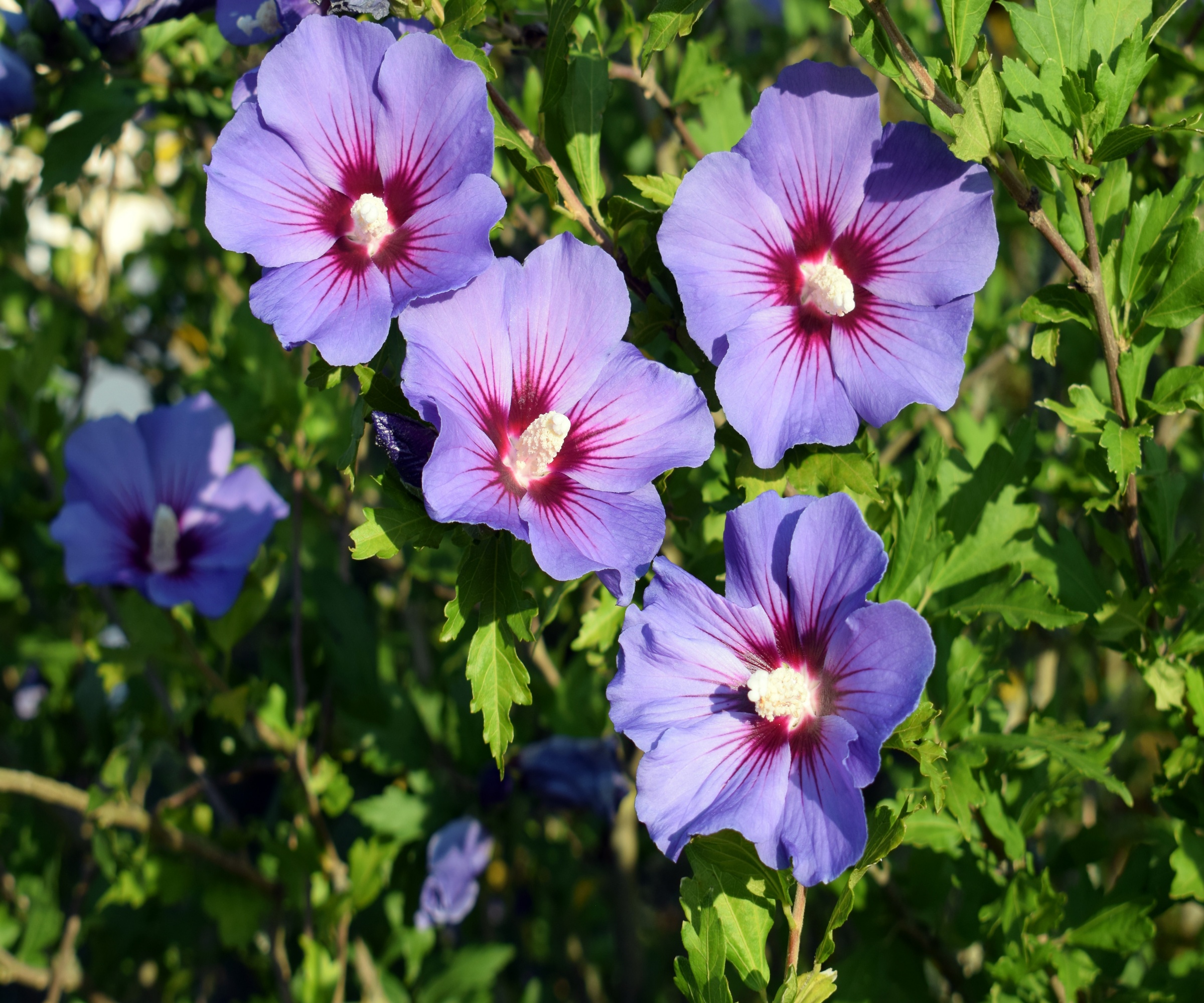
Exotic-looking hibiscus will leave pollinators covered in a veil of pollen
The large, exotic flowers of hibiscus, Hibiscus spp., make it one of the best flowering shrubs for the backyard. They are a draw for a wide range of pollinators, from butterflies to hummingbirds and even dragonflies.
Hardy hibiscus is a North American native and its large flowers range in color from white to pink, red and magenta. Each flower only lasts a couple of days but will swiftly be replaced by a new bud, so they are delightful shrubs.
Hibiscus grows to 7ft tall and up to 4ft wide, so are ideal for the middle of a hedge. They prefer full sun but in hotter regions will need some protection from the full force of midday heat.
Hardy hibiscus are suitable for hardiness zones 4-9, though may need wrapping in protective fleece on colder nights in more northerly states. Tropical varieties are suitable for zones 9-11. Some hibiscus flowers can be eaten, so if you are interested in edible hedge plants, this might be one to try. However, always check on the species and whether it is safe to consume.
A wide selection of hibiscus plants are available from Walmart.
9. Honeysuckle
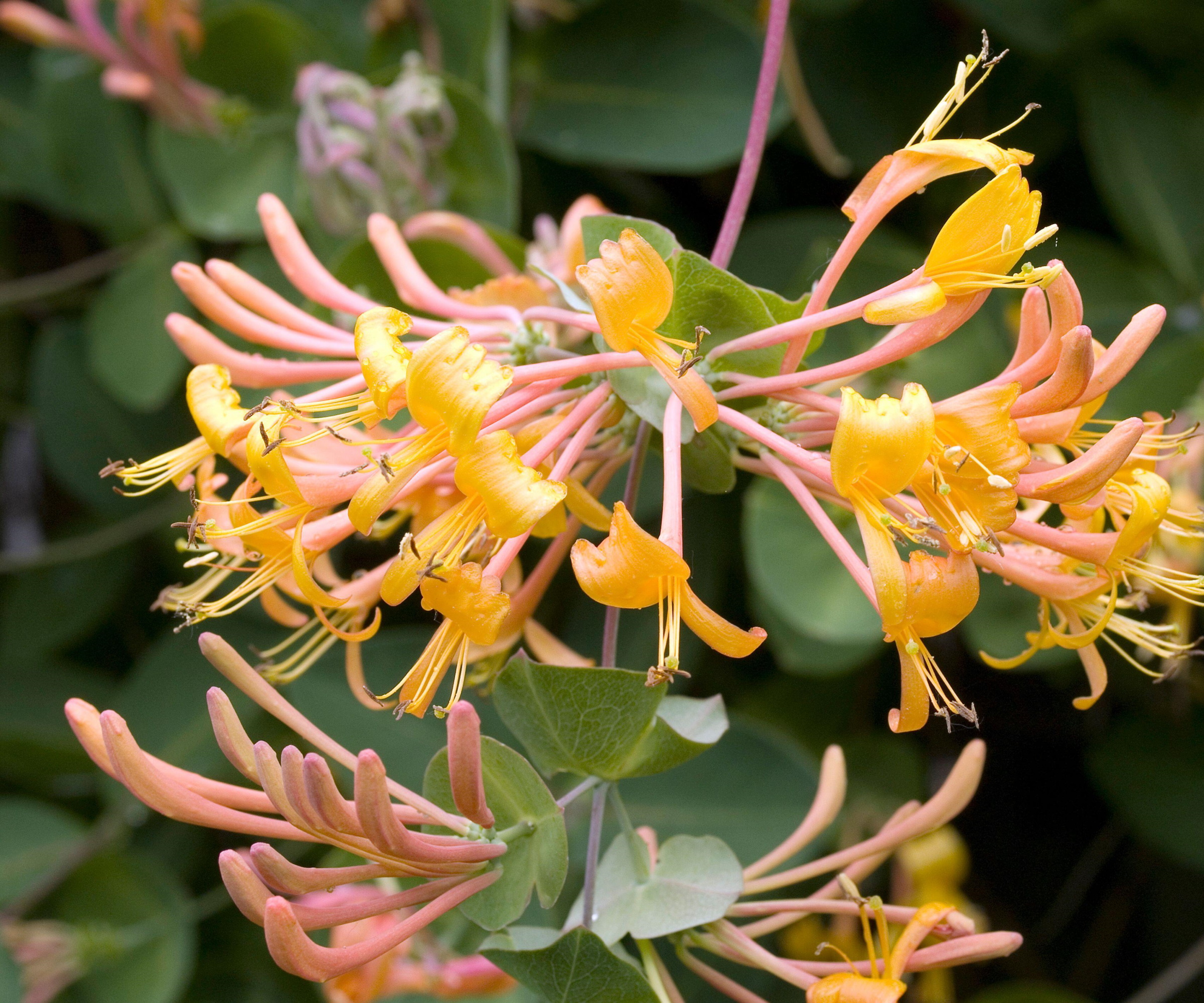
Honeysuckles can be invasive, but choose the right variety and your pollinators will thank you
Although usually grown up a trellis or pergola, honeysuckles (varieties of Lonicera) also thrive well scrambling through a hedge and their deliciously scented flowers are wonderful for all sorts of pollinators.
There are several varieties of honeysuckle, and some will flower in winter. Many varieties are deciduous but some are evergreen. They are shade-tolerant, which makes them ideal for growing among the other plants in your pollinator-friendly hedge.
Do be wary of the more invasive varieties, which include Morrow's honeysuckle (Lonicera morrowii), Amur honeysuckle (Lonicera maackii), Bell’s honeysuckle (Lonicera x bella) and Japanese honeysuckle (Lonicera japonica).
Luckily many varieties are non-invasive, including the US native trumpet honeysuckle, Lonicera sempervirens, which are native to the East Coast and hardy in USDA zones 4 to 9.
Honeysuckle plants are available to buy from Walmart.
10. Crab apple
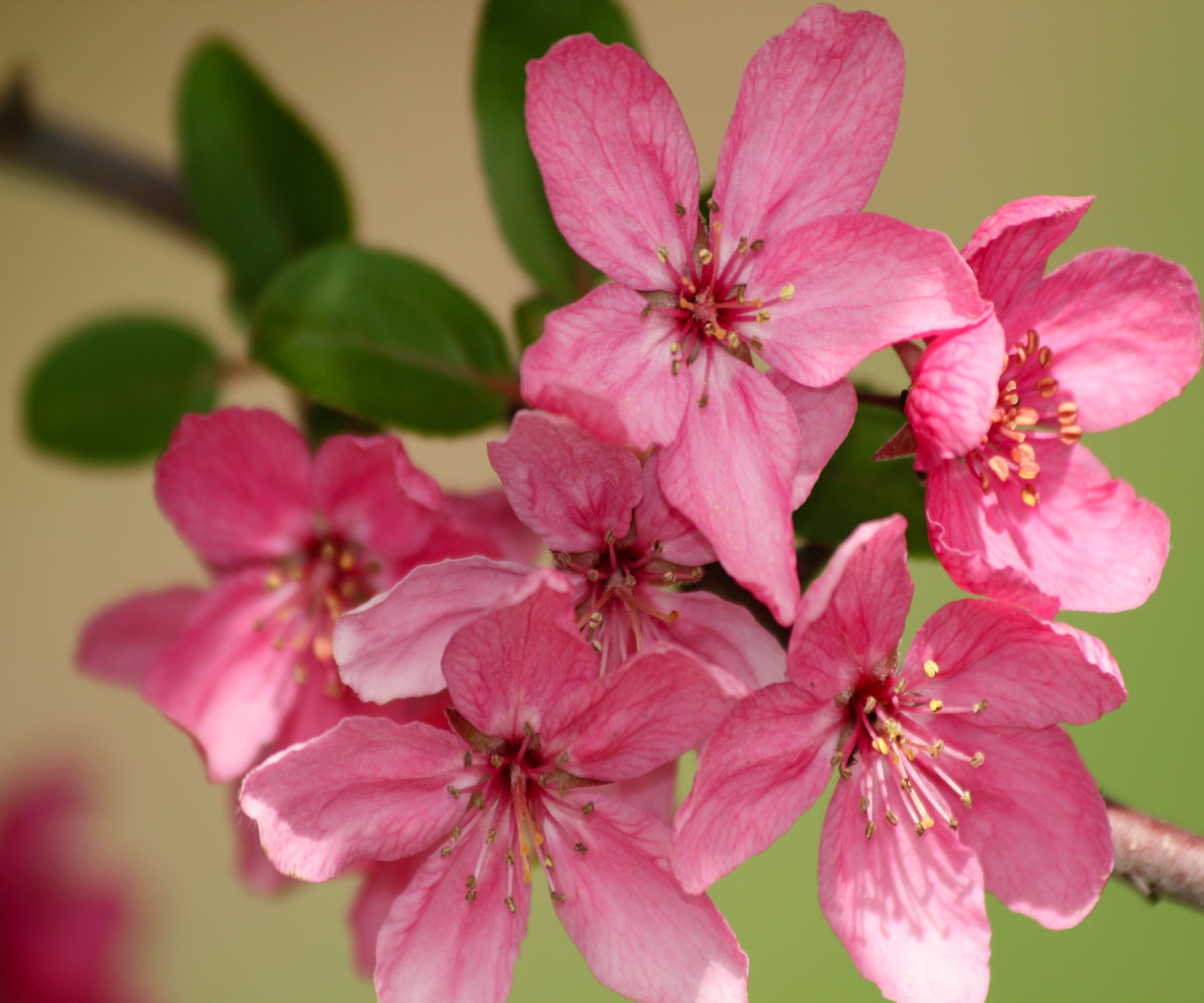
Crab apple 'Prairifire' has unusual and eye-catching dark pink blossom
There are more than 30 varieties of crab apple (Malus sylvestris), and they are one of the best trees for pollinators and the backyard as a whole. Most varieties will grow well in zone 4 to 8.
They can grow up to 20ft tall and in late spring create a froth of white and pink blossom that will bring the pollinators flocking. This is extremely useful if you are growing other apple trees in your yard, as crab apples will help to pollinate them all!
In the fall, crab apples develop large crops of small, tart fruits that we can use for jams and jellies, but which also provide vital late sugar for pollinators to feed upon.
Crab apples like a sunny spot and need little supplementary watering once established. We have some in our wildlife-friendly hedge at home and they have meshed beautifully with the other trees and shrubs.
Varieties include ‘Prairifire’, which has dark pink flowers and fruit that lasts well into the winter, or the shorter ‘Aberina’ which grows to 10ft and has sweet white blossom.
FAQs
When should I plant my wildlife hedge?
The best time to plant a hedge is in spring, when the soil is warming up, or in the fall when the soil is still warm after summer.
Both seasons can expect to see some rainfall, which will help your plants get established. These are also the seasons where bare root trees and shrubs are available. Bought with the roots loose, rather than in containers, they are an economical way of creating a hedge and even though the plants look small, they will grow quickly once they get going.
What plants can I use as ground cover beneath my hedge?
Ground cover is important under hedges because the plants retain moisture in the soil and also provide food for pollinators.
There is a wide variety of attractive, ground cover plants for shade, including pulmonaria, cyclamen and hellebores, which can be grown alongside foliage plants such as ferns.
A hedge for pollinators will also benefit the local ecosystem as a whole. It will not only look attractive all year round and increase your privacy but will improve pollination so you get better flowers and bigger crops.

Ruth is a Contributing Editor for Homes & Gardens, and formerly Gardening Editor of Amateur Gardening magazine. She is horticulturally trained, with a qualification from the Royal Horticultural Society. Her work for Amateur Gardening, the world's oldest weekly gardening publication, involved matching gardening tasks with each season, covering everything from sowing and planting, to pruning, taking cuttings, dealing with pests and diseases and keeping houseplants healthy. She is an expert in ornamental plants and edible crops, and everything she writes about and photographs is in her own garden, that has been a work in progress since her family moved there in 2012.